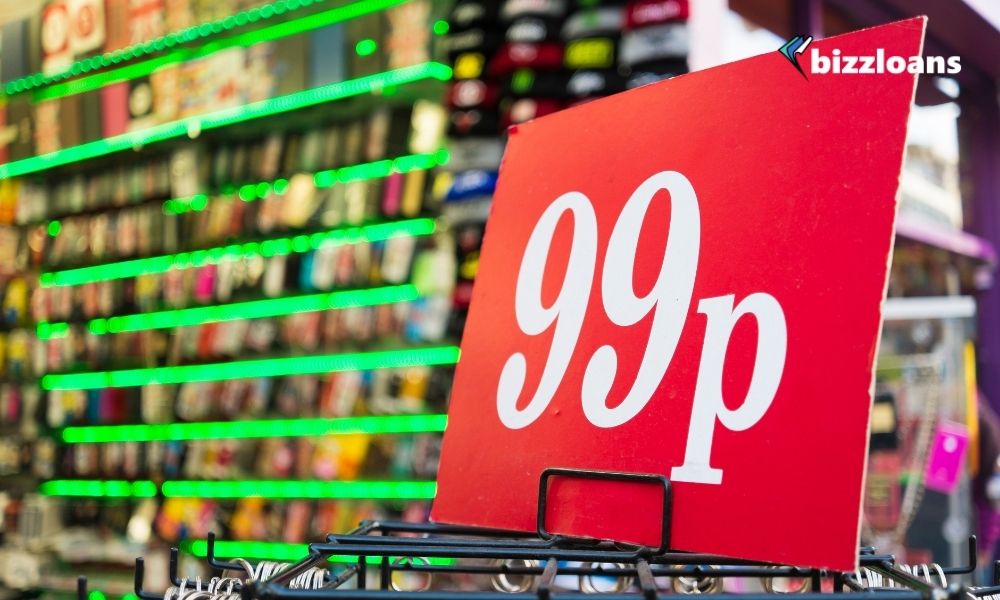Pricing strategies are quite tricky in all aspects especially for small businesses and start up companies. There are so many articles and books that have been written about this topic and yet there are still no hard and fast rules set as these pricing strategies are industry and market dependent as well.
Defining Pricing Strategy
Pricing strategy is a method that is used to set and establish the best prices for any product or service that the business is offering. The ability to consider consumer and market demand will allow and help you to choose prices in order to maximize income or profits and your business’s shareholder value.
However simple the definition of pricing strategy may be, there is so much more that goes into the process of being able to set the proper and standard pricing for your business’s products or services. The types of pricing strategies available are dependent on so many factors such as income targets, marketing objectives, target market, the kind of product or service that you are offering, and your brand’s position in the market. Other factors such as market demands, pricing by competitors, and even market and economic trends influence and affect pricing strategies.
However you price your product, the type of pricing strategy you employ must maximize your business’s profit and revenue because this is the ultimate goal of a business.

Nowadays, the retail business is a mix of actual physical shops and e-commerce or online retailers and there are definitely some differences in terms of their pricing strategies. There are still a lot of people who would prefer going to shops on a retail strip or mall because they would prefer being able to closely look at the products that they want to buy for themselves. This does affect pricing strategies in a way. It does not necessarily mean that online shops have lower pricing than those that have retail physical stores. Although there are mathematical and accounting-based formulas to arrive at a pricing that would be optimal for the sales target of the business, pricing can still be experimental in some way based on internal and external factors in the course of business operations.
The types of pricing strategies you are going to use in the course of your business remains dependent on the type of transactions your business engages in. Especially for high-end or luxury shops, products may be pegged at a higher price on lower volumes or in the case of other regular retail shops, it could be lower priced items to cater to high volume of transactions or items to be sold. Either way, the pricing strategy should be able to help in achieving the sales targets of the business for a given period of time that would yield better income or profit for the business.
Price Elasticity of Demand
This is a concept that would help the business owner understand the effects of fluctuations in your target market on your pricing strategy. This also determines how sensitive your product or service can be in terms of changes in demand brought about by internal and external factors.

Typically, you would want your product or service to be inelastic, meaning, despite higher pricing or an increase in price, your customers would still purchase your product. A good example would be fuel. This happens simply because fuel is essential in running certain businesses and for those with vehicles, they are left with no choice but to still purchase fuel as they need it to keep their vehicles running.
Elastic products such as movie tickets and even mobile subscriptions suffer from pricing fluctuations. When these products or services increase in prices, consumers do have a choice of whether they will be purchasing them or not. There is a big possibility that because of these pricing fluctuations, consumers would go for cheaper rates and might leave your business out if your pricing is not right for your customer’s budget. Customers would go for cheaper prices especially if the offers are better and would still give them the quality that they are looking for.
A business owner would want their products or services to be inelastic because the demand would still be stable despite price fluctuations brought about by market factors.
Types of Pricing Strategies
There are several pricing strategies applied by retailers and other businesses and each of them have benefits and disadvantages just like anything else.

1. Keystone Pricing
This type of pricing strategy is one of the most commonly used pricing in business. Basically, the price of your products is pegged by doubling the wholesale cost of your products.
This could very well be illustrated using this formula:
Retail price = ((cost of item) / (100 – markup percentage)) x 100
= ((10) / (100 – 50%)) x 100
= $100.00
Let us say that you are marketing your product to be sold at a 40% markup for a product that you got at $10.
Retail price = ((10) / (100 – 40)) x 100
= $16.67
This type of pricing strategy works as this is an easy rule of thumb for a sufficient profitability margin for your products and services. However, due to tough competition in the market or industry that your business is in, it could also be a challenge to maintain this kind of pricing strategy especially if the market is already saturated with similar products or services. The key here is to ensure that your products and services remain competitive in terms of pricing so your target market would be swayed to favoring your product offers while maintaining your known quality levels.
2. Competition-Based Pricing Strategy
Also known as competitor-based pricing or competitive pricing, this type of pricing strategy focuses more on what is the going rate or market rate of the products or services that you are offering. This pricing strategy does not take into consideration what the current consumer demands are nor does it consider the cost of the product or service.
The benchmark by which your pricing strategy comes into place lies on what your competitors’ prices are in the market at the current time.
For example, if your competitor is selling the same product between $20 to $30, you would choose to price your product or service in between those numbers.
Marketing has a big effect on this type of pricing strategy. And because they are aware of the business’s competitors, your marketing team can make recommendations to probably give more perks and loyalty rewards to your current and new customers to maintain your competitive edge in the market without having to pay too much as for the price of your business competitors.
3. Anchor Pricing
This type of pricing strategy employs having to put on your price tags the original price of the item and its sale price in order to quickly show the savings your customer will get when they purchase your product or avail of your service.

The original price of your product serves as a reference point to your customers whether they would be buying the product or not. And because consumers are more likely to purchase items where it is presented that they can save more by buying it, a sale would always be imminent.
This type of pricing strategy is usually employed at retail shops like groceries and clothing stores. However, since consumers are always on the lookout for great deals, consumers are more likely to know base prices in other similar stores. And if it happens that your anchor prices are higher than other stores, consumers are just more likely to leave and often feel a sense of distrust with your service.
4. Manufacturer Suggested Retail Price (MSRP)
This type of pricing strategy is the kind where manufacturers peg or recommend a price that a retailer will offer on their products, and this will be standard across all the retailers in all locations where the product will be sold. More often than not, conventional and mainstream products often have this type of pricing strategy in place.
There are a number of factors that go into this type of pricing strategy. Aside from the retailer not having a hand in the decision-making process of pricing the products or services, it could be difficult to reach sales targets with this type of pricing strategy. Surely, it would take more effort to carve your place in the market especially if there are a lot of other retailers offering the same items in more strategic locations.
5. Psychological Pricing

Have you ever wondered why a lot of products that you buy either online or from retail shops have price tags that end with odd numbers like 5, 7, or 9? This type of pricing strategy actually taps that part of the consumer’s brain which triggers impulse because there is a perception of a bargain. The number 9 reigns supreme in this type of pricing strategy. So, for example, if one see s a price tag that’s $99.99 instead of $100, consumers could actually buy that item on impulse. However, for those who can actually afford to buy the item at an even $100, this pricing strategy would seem a bit off.
6. Pricing Below Competition
This type of pricing strategy uses as benchmark the competitor’s pricing. Business owners deliberately lower their prices compared to that of their competitors with the intention of luring more customers to buy their products or services.
This type of pricing strategy will be very successful if the business owner is able to negotiate with suppliers on the purchase price of their products from them. Whatever cost that will be saved from successful purchase negotiations, it is likely that the business will be able to use the savings on marketing strategies and plans to gain more traction with current and potential customers.
7. Pricing Above Competition
Business owners who see the need to give a perception that their products and services yield higher quality among their competitors use this type of pricing strategy. It is not always easy to pull off this type of pricing strategy since it is primarily demographics and location based. You would not expect to price your items way higher than your competitors if it is a suburb or an area that is quite remote. Price-sensitive customers may not buy this type of pricing strategy.
8. The Cheapest Above All
While it is true that having the lowest price among all your competitors can do a lot better than bad for your business, there is a tendency for this type of pricing strategy to put you in a spiraling downward position after quite some time. This type of pricing strategy is recommended for short-term business needs such as the need to boost sales or getting rid of old stock in your inventory so you could replenish and still be able to recover from potential losses.
9. Seeing Red
The color red has always been associated with impulsive sales activities that are beneficial for businesses. In a study, men are more often and likely to respond and buy on impulse when seeing red tags in shops. On the other hand, women, although they are highly likely to be more impulsive than men in terms of buying products, would not really be bothered about the colors of the price tags that they see. Women are still more scrutinized over their purchases compared to men. So, if your merchandise mainly deals with items for me, your prices should be on red price tags. Red tag sales mainly target the male audience as compared to the females.
10. When Size Matters
This does not refer to shoe or dress sizes but mainly with the size of the text or font used on the price tag of your items. This type of pricing strategy has given the perception that the smaller the text size of the discounted price is on the tag, the more likely it is to be purchased. The size of the text guides the reader’s brain to think that the price has been significantly reduced, and it is now currently much lower than the original price.
11. Drop Your Currencies
Probably you have noticed that most restaurants do not include currency symbols on their menu. This is a type of pricing strategy that has been in use by these food providers simply because people tend to not think about too much of the cost when they do not see any currency symbols on the menu. Seeing currencies on your price tags has the tendency to have the customer cut down on spending, thinking that it would already be too costly though sometimes it is not. This type of pricing strategy takes off the pressure of spending, leading your customers to even spend a higher amount eventually.
12. Customer’s Fear of Missing Out (FOMO)
FOMO is a current buzzword among millennials that refers to making impulsive decisions on the fear of not being able to take part in something that is trendy and relevant.
This type of pricing strategy totally helps in big and seasonal sales such as Black Friday sales or even during product launches of popular brands like Apple and Samsung.
You usually see tag lines such as “Last 5 items….,” or “For the first 100 customers only…” These types of tag lines employ this type of pricing strategy in order to gain more sales from customers, raking in more income for the business for the period.
13. Discount Pricing
No customer would decline purchasing products or items that include loyalty rewards, coupons, discounts, rebates, and other similar marketing strategies that increase sales for the business. This type of pricing strategy helps the business have a foot traffic increase into your shop, to sell old stock for new inventory to come in, and even to attract the most price-sensitive customers that would always consider purchasing products or services that would benefit them in a lot of ways – again, for example, through rebates, or coupons that they can use on their next purchase from the store.
This pricing strategy should only be used at certain times mainly because you do not want to be “rebranded” into being a discount shop all throughout the time. It would be harder to deflect the perception of customers of you being a discount shop when you do this often and you will not be able to go back to being on “normal” prices again in the future.
14. Multiple Pricing
You know how it is when you buy products in bundles? Let us say, you bought the new PlayStation console with a bunch of games and other items with it. This type of products and purchases fall under this type of pricing strategy. Consumers will be made to think that buying in bundles would mean more savings for them rather than buying the items individually. While it is true that this would boost sales and allow your business to reach its target market sales, it could be more difficult to sell these items sooner at their regular prices if this type of pricing strategy is done on a regular basis. This type of pricing strategy would be recommended for seasonal sales, especially Christmas, or after season sales for restocking of newer inventory items.
As previously said, there is no one size fits all pricing strategy for any business under any given market or industry. Any business may collectively use any of the above pricing strategies that would work well for them in reaching their income goals and targets for the period.
NEED FUNDING FOR YOUR BUSINESS? GET A FREE QUOTE TODAY AND GET FUNDED!
CLICK HERE TO GET A FREE QUOTE
Share this article


